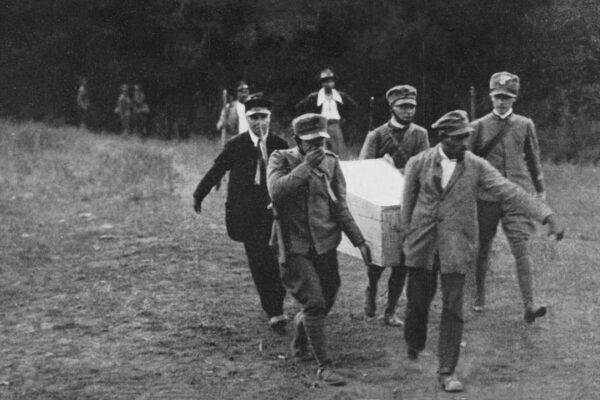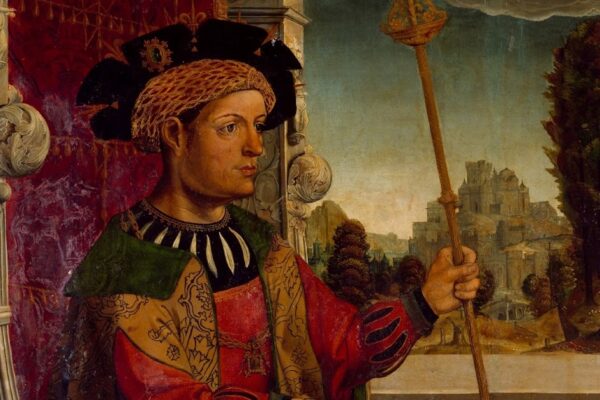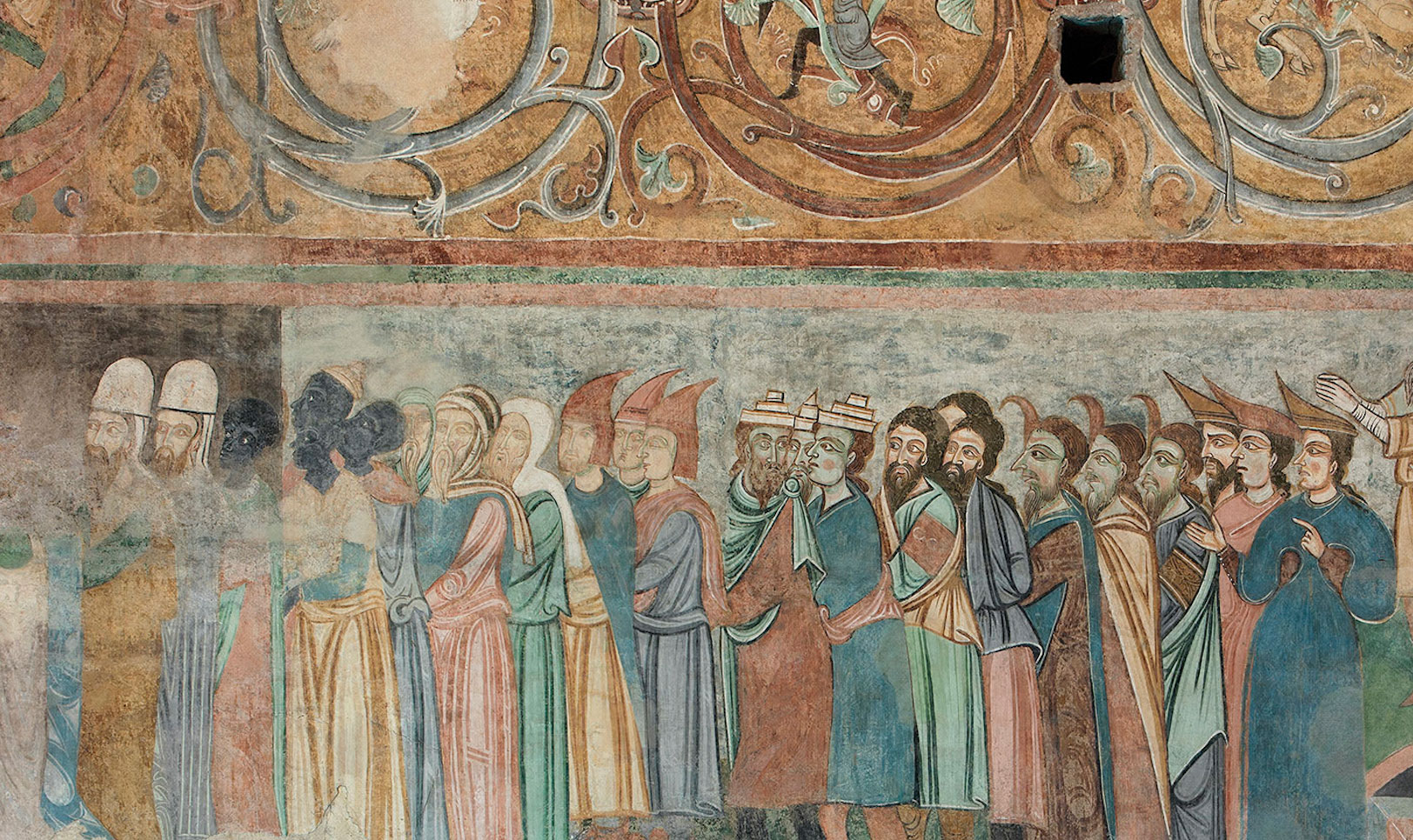A Primo Levi Anthology
Collected from various sources on the occasion of the presentation of Primo Levi’s Complete Works at the National Book Festival in Washington D.C.
Download CPL App
Quaestio De Centauris, A short story by Primo Levi
Those were the days when the earth itself fornicated with the sky, when everything germinated and everything was fruitful. Not only every marriage but every union, every contact, every encounter, even fleeting, even between different species, even between beasts and stones, even between plants and stones, was fertile, and produced offspring not in a few months but in a few days. The sea of warm mud, which concealed the earth’s cold, prudish face, was one boundless nuptial bed, all its recesses boiling over with desire and teeming with jubilant germs.
This second creation was the true creation, because, according to what is passed down among the centaurs, there is no other way to explain certain similarities, certain convergences observed by all. Why is the dolphin similar to the fish, and yet gives birth and nurses its offspring? Because it’s the child of a tuna and a cow. Where do butterflies get their delicate colors and their ability to fly? They are the children of a flower and a fly. Tortoises are the children of a frog and a rock. Read more
Primo Levi, Anthropologist of Normality, Ernesto Ferrero, 2009
Within the catastrophe of the Shoah, humanity was fortunate that the train leaving Italy for Auschwitz in February 1944 was transporting a very special envoy: an anthropologist not yet aware of his talent; a young chemist who would later become a writer and who had already written short stories and poems. One of them, set in a Milanese suburb among factories, describes a morning siren, announcing the start of the workday – that seems to prefigure the chilling sirens of the camps. Levi is capable of elaborating an articulate interpretation of the facts because his approach is rational (not impressionistic, not rhetorical) and comprises a wide range of disciplines, from the sciences to linguistics and ethology. Of course, knowledge in and of itself is not enough: it needs to be transmitted, as Galileo, Darwin, and Freud, all excellent writers, were able to do. Read more
The Grey Zone, Anna Bravo, Working paper for the Lezione Primo Levi: Raccontare per la storia, Einaudi, 2014
Levi writes about Rumkowski “we are all mirrored in Rumkowski, his ambiguity is ours, it is our second nature, we hybrids molded from clay and spirit.” Certainly he was a literary character, a resource that the narrative of these events cannot do without, whether the narrative is considered as testimony or it is interwoven with analytical writing. Nevertheless, he also seemed to be a concrete individual in If This is a Man. If so, he seemed most believable as a shrewd prostitute who can convince clients that they are having love affairs. There is one basic difference. A prostitute sells his or her body. Henri sells his soul. From Levi’s point of view, selling one’s soul is worse than losing it like so many prisoners who did. The reason is that the word sell alludes to a relationship, a range of choices, a pact. It is a point of view that falsifies the relationship between the oppressed and the oppressor down to the roots and turns one of Levi’s most treasured words into a parody, friendship.
I do not know if The Drowned and the Saved was in harmony with the climate of Italy of those years, as Alberto Cavaglion thinks. This was a climate that tended towards half tones and towards self-absolution to the point of self-complacency. Eraldo Affinati thinks differently. For him there is no writer aside from Levi who had the courage “before the fall of the Berlin wall to reflect beyond ideological categories on the feelings of extreme fragility, present in all of us like harmful sirens capable of unhinging our defenses and leading us to the most terrible of abstentions – the abstention from judgment.” Read more
Primo Levi’s Love, Uri Cohen (University of Tel Aviv)
In the chapter Phosphorus in the Periodic Table Levi tells us of a love story that took place in 1942, when he was employed in futile research after an oral cure for diabetes. Beatrice and Virgil in one, Giulia Vineis was responsible for the job offer and becomes his guide, in the factory as well as in life and love. They knew each other from school she was strong, passionate, and catholic and above all engaged. Phosphorus, the luminous burning noxious element is all about life under Fascism and the racial rules, about the way a regime insinuates itself in human intimacy and its language. Brave and honest Giulia thinks that “Racial laws are a bunch of stories, what importance could they have anyway?” Read more
Primo Levi at the United Nations, Roger Cohen (The New York Times)
The core responsibility of the journalist, unchanging through all the rapid transformations of my profession, is to bear witness. If This is a Man is, among other things, journalism raised through observation and distillation to the level of literature. For any journalist it is as good a holy grail as any. This, then, is how it was day after day: the thirst, the hunger, the cold, the pain, the drudgery, the violence, the scavenging, the stealing, the filth, the lice, the selections, the executions, the hopelessness, the dreaming, the fear, the glimmerings and the humiliations. “Hier ist kein warum,” – “There is no why here” – Levi learns early on from a guard, who snatches from him, with gratuitous sadism, an icicle he has grabbed to quench his thirst. On page after page, with a chemist’s precision, Levi assembles detail by detail his account of the Nazi exercise in barbarism, a program of senseless mass murder embraced by the nation whose civilization produced Beethoven. He wants historians to know, he wants the whole world to know, lest anyone forget. But who will believe him or care? Read more
Primo Levi at the United Nations, Maaza Mengiste (writer)
In the chapter, “The Gray Zone”, from The Drowned and the Saved, Primo Levi questions if survivors of Nazi terror have succeeded in understanding and making others understand their experience. He goes on to define what he means by the verb “to understand”. It coincides, he says, with “to simplify”. The world is so complex and so tangled, he asserts, that we simplify in order to find our footing and figure out what action we must take. We reduce the knowable down to words and concepts that will allow us to embrace what is incomprehensible. We narrow our vision, set aside the lingering questions, and stand in front of what can be contained. Here is a little boy who has drowned. Look at him and understand the numbers he represents, consider the desperation that put him on that boat. We mourn for him, this boy who symbolizes the very best in human nature, that aspect of ourselves that has fallen victim to the recent waves of terrorist attacks and ongoing violence. Read more
A Primo Levi Atlas: Conversation with Marco Belpoliti. Alessandro Cassin
Today, one of Levi’s most interesting contributions is his investigation of the “grey zone”. Here we hear clearly his voice as a scholar of power relations, in both their extreme manifestation inside the camp, but also in their less oppressive manifestations in the outside world. His book for the twenty-first century and beyond is The Drowned and the Saved. He still needs to be studied and understood, he is an important author for our future. I find his anthropological and ethological perspectives to be decisive. This is the new frontier, without forgetting the Nazi extermination and concentration camps. There are still similar situations in the world, and I fear that it will occur again. In different forms, but this kind of horror will occur again. We see it every day. And again there is the theme of the “foreigner”, xenophobia. Unfortunately [for these reasons] Levi continues to be topical and relevant. Read more
Calvino, Manzoni and the Gray Zone. Carlo Ginzburg
First of all, there is a memory, an image. Primo Levi and Calvino are walking side by side at dusk in the summertime, talking animatedly (Calvino is taller), along the road that goes towards the village of Rhêmes Notre-Dame. It was at Rhêmes, a little side valley of the Aosta Valley, that the co-workers and friends of the Einaudi publishing house used to meet each summer. The discussions would go on for about a week. That was the only time when, at least when I was there, that Primo Levi participated. It must have been 1980 or 1981. The meaning of that image imprinted in my memory became evident in retrospect when Sergio Solmi’s translation into Italian of Raymond Queneau’s Petite cosmogonie portative was published by Einaudi in 1982. Calvino wrote an afterword for it, entitled Piccola guida alla Piccola Cosmogonia *little guide to the little cosmogony+, where he thanked Primo Levi, “who with his professional knowledge as a chemist and the agility of his sense of humor managed to get a handle on many of the passages that had remained inaccessible to me.” In an enthusiastic review dedicated to the Petite cosmogonie portative, Levi referred to Calvino’s Piccola guida as “very sharp.” In 1986 he evoked his recollections of the work he did on Queneau “with happiness and amusement” at Rhêmes Notre-Dame as the “happiest hour” of his friendship with Calvino, who had died the year before.4
The chemist who had helped Calvino decipher Queneau’s arcane allusions to Mendeleev’s periodic table was also the author of The Periodic Table (1975), that very fine book where the table of the elements was used as a metaphor for the various and sundry way of impersonating the human condition. However, can we really detect a non-metaphoric equivalent of Mendeleev’s table in the sphere of human relationships? In his exploration of the “transversal bonds which link the world of nature to that of culture,” Primo Levi implicitly asked this kind of question and sought an answer.” Read more
Primo Levi at Fossoli – The functioning of the camp proves to be a link between the RSI (Italian Social Republic) and the Nazis in their collaboration.
Primo Levi was dismissed from the camp at Fossoli and put aboard the train that was to take him from the station at Carpi to Auschwitz on February 22, 1944. Right before he left, he clearly saw a RSI gendarme on the platform who was guarding the prisoners, a living proof that the Italian Fascists were participating and cooperating fully in the deportation of Jews to Nazi Germany. Massimo Dini and Stefano Jesurum recount the exchange of words that took place then on that day in Primo Levi. Le opere e i giorni (1992) [Primo Levi: Works and Days]. This episode comes back to our attention in Liliana Picciotto’s new book L’alba ci colse come un tradimento (Mondadori, Milan 2010). The title – meaning “the dawn struck us like a betrayal” – is a quotation from Levi. The book is dedicated to the «Jews in the camp at Fossoli, 1943-44». Picciotto presents the readers with a wealth of newly discovered information that shows the daily working relationship between the Italian and German authorities in the management of the camp in precise and concrete details. Read more
Primo Levi, Mountain Rebel. Gavin Jacobson reviews Sergio Luzzatto’s Primo Levi’s Resistance.
In September 1943, Primo Levi took to the mountains in northwest Italy to escape the Nazis. A keen mountaineer since the age of 14, for Levi the Alps had long been a sanctuary for physical release and spiritual recovery. High up in the alpine tundra, he exulted in hard battle with the elements, the same “Mother-Matter” he confronted at the Chemical Institute in Turin, where he worked as a chemist on the molecular structure of carbon. The mountain’s geological morphologies, the combined sense of its instant creation and eternal presence, the fellowship amongst climbers roped together across pleated terrains: these had been Levi’s greatest pleasures. Read more
Primo Levi’s Resistance. Rebels and Collaborators in Occupied Italy. Sergio Luzzatto; Translated by Frederika Randall
Like most of his Jewish friends, the twenty-four-year-old Levi had not gone up into the hills for any pressing military or intrinsically political purpose. He was not evading an army call-up, since adult males “of the Jewish race” had been banned from military service in 1938 and were even less welcome in the collaborationist Italy of Salò. He wasn’t there to hide out and pursue guerrilla action, since he wouldn’t have taken along his sister and fifty-year-old mother. Nor was he there in response to a great call to take up the anti-Fascist resistance, for there had been no such call in the days just after the eighth of September; the resistance scattered here and there did not immediately become the Resistance with a capital R. Certainly Primo Levi stood with the anti-Fascists, and he had taken sides at least a year before Mussolini fell. Pressed by his charismatic cousin, Ada Della Torre, he and his friends—half a dozen Turinese Jews working in Milan—had already approached the anti-Fascist Partito d’Azione and even carried out some clandestine activities.20 But when Il Duce was ousted they were unable to translate that determination into concrete military or political action. The German occupation hit them more as endangered Jews than as rebels of the first hour. Read excerpts from the book









